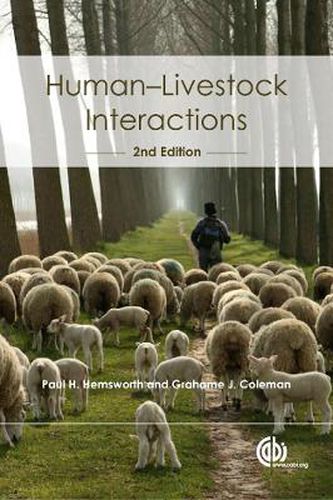Readings Newsletter
Become a Readings Member to make your shopping experience even easier.
Sign in or sign up for free!
You’re not far away from qualifying for FREE standard shipping within Australia
You’ve qualified for FREE standard shipping within Australia
The cart is loading…






Human-animal interactions have a profound effect on farm animals and stockpeople alike. Training of stockpeople can improve livestock welfare and in turn productivity, and is a principle area of focus after improvements in genetics, nutrition, reproduction, health and housing have been addressed extensively. This volume explores new information on human-livestock relationships, their effects on both animals and handlers and the application of this knowledge particularly in relation to dairy cows, veal calves and poultry. Developments in knowledge of the relationships and their effects post-farm gate are discussed, providing a practical guide that will be a valuable resource for farm managers, researchers in the animal sciences, psychologists, ethologists and veterinarians. It will also benefit students of veterinary and animal sciences. Praise for the previous edition: ‘The book should take position in the libraries of people involved of animal production and especially in education and management of stockpersons’ Livestock Production Science.
$9.00 standard shipping within Australia
FREE standard shipping within Australia for orders over $100.00
Express & International shipping calculated at checkout
Human-animal interactions have a profound effect on farm animals and stockpeople alike. Training of stockpeople can improve livestock welfare and in turn productivity, and is a principle area of focus after improvements in genetics, nutrition, reproduction, health and housing have been addressed extensively. This volume explores new information on human-livestock relationships, their effects on both animals and handlers and the application of this knowledge particularly in relation to dairy cows, veal calves and poultry. Developments in knowledge of the relationships and their effects post-farm gate are discussed, providing a practical guide that will be a valuable resource for farm managers, researchers in the animal sciences, psychologists, ethologists and veterinarians. It will also benefit students of veterinary and animal sciences. Praise for the previous edition: ‘The book should take position in the libraries of people involved of animal production and especially in education and management of stockpersons’ Livestock Production Science.